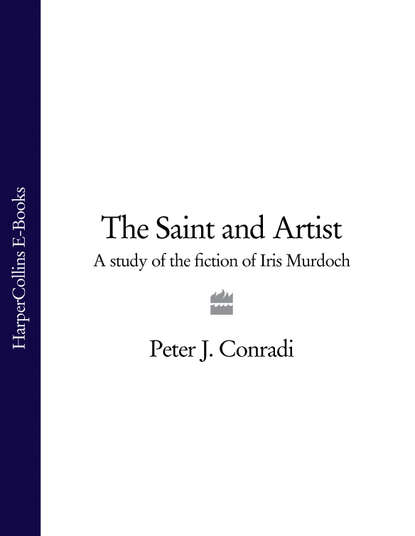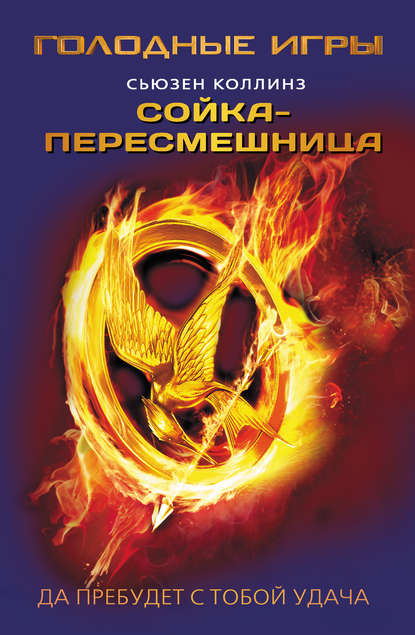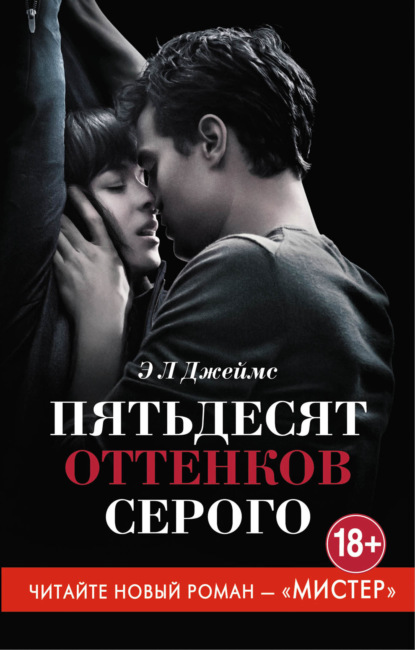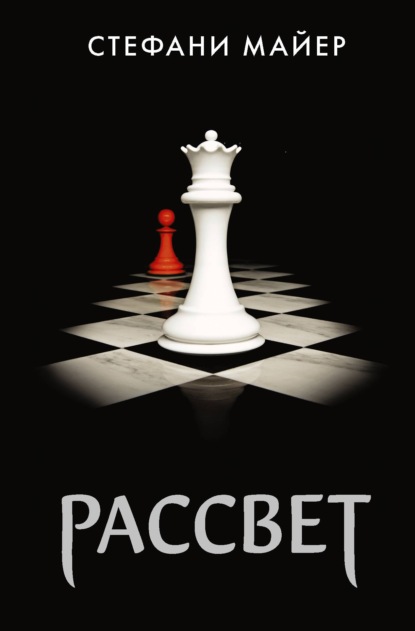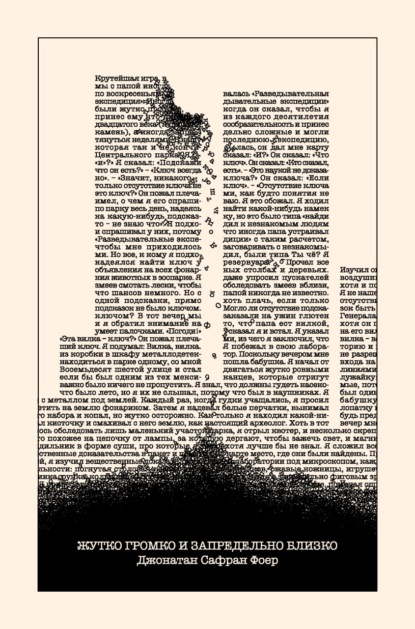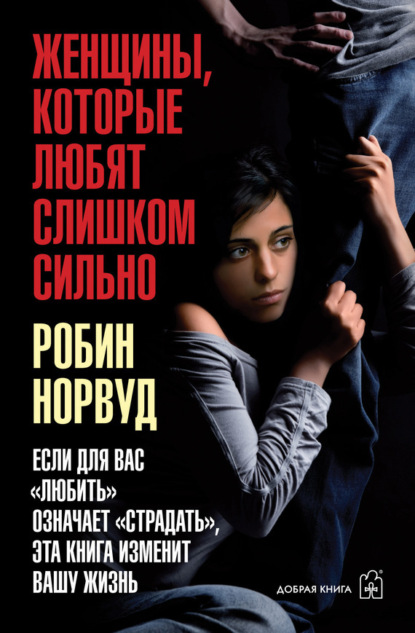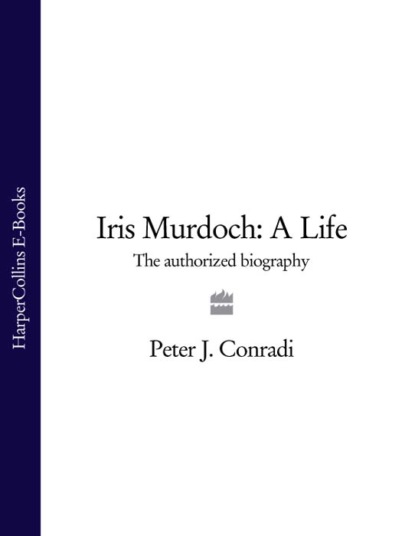
Текст
отзывы: 0 | рейтинг: 0
Iris Murdoch: A Life: The Authorized Biography
Жанр:
Биографии и мемуары
Язык:
Английский
Тип:
Текст
Год издания:
2018
Полная версия
Полная версия
Iris Murdoch: A Life: The Authorized Biography
Peter J. Conradi
A full and revealing biography of one of the century’s greatest English writers and an icon to a generation.Dame Iris Murdoch has played a major role in English life and letter for nearly half a century. As A.S.Byatt notes, she is ‘absolutely central to our culture’. As a novelist, as a thinker, and as a private individual, her life has significance for our age. There is a recognisable Murdoch world, and the adjective ‘Murdochian’ has entered the language to describe situations where a small group of people interract intricately and strangely. Her story is as emotionally fascinating as that of Virginia Woolf, but far less well known; hers has been an adventurous, highly eventful life, a life of phenomenal emotional and intellectual pressures, and her books portray a real world which is if anything toned down as well as mythicised. For Iris’s formative years, astonishingly, movingly and intimately documented by Conradi’s meticulous research, were spent among the leading European and British intellectuals who fought and endured World War II, and her life like her books, was full of the most extraordinary passions and profound relationships with some of the most inspiring and influential thinkers, artists, writers and poets of that turbulent time and after.Peter Conradi was very close to both Iris Murdoch and John Bayley, Iris’s husband, whose memoir of their life together has itself been the subject of an enormous amount of attention and acclaim. This will be an extraordinarily full biography, for there are vast resources in diaries and papers and friends’ recollections, and while it is a superlative biography it is also a superb history of a generation who have profoundly influenced our world today.
IRIS
MURDOCH
A Life
PETER J. CONRADI
For John Bayley and for Philippa Foot
CONTENTS
Cover (#ue9c401dc-e8f6-5e17-82c6-0f402bff6ca5)
Title Page (#ud9c4c377-3e45-52c0-9b44-c99884950c5d)
INTRODUCTION (#u7e14d02b-e654-5dc3-8e23-f282c08cbad9)
I INNOCENCE Fairy-Tale Princess 1919–1944 (#u612160f0-deb8-587e-8d0e-5846091fe849)
1 ‘You ask how Irish she is?’ 1616–1925 (#u5a937ac7-9a2b-5100-80b0-1d0d4a7d9217)
2 No Mean City 1925—1932 (#u1db4f150-26e5-551d-968c-c8614c3a1718)
3 The Clean-Cut Rational World 1932—1938 (#u2b86e5b5-bef9-5c37-9e46-0757546d969e)
4 A Very Grand Finale 1938–1939 (#ue5cb28a6-6729-5b0a-8a61-f52b1de90b5e)
5 Madonna Bolshevicka 1939–1942 (#u9c1389b8-20e4-5864-90a2-48dc688b1a15)
6 This Love Business 1942–1943 (#ub1cdeb93-d37d-5502-8baa-90d3be572c83)
7 ‘A la Guerre, comme à la Guerre’ 1943–1944 (#ub41430aa-3d59-5908-9d54-2988a5fb8a0e)
II INNOCENCE LOST Storm and Stress 1944–1956 (#u04190973-0838-5347-a1fc-a202ba3b06f0)
8 A Madcap Tale 1944–1946 (#udf882417-0489-50df-a849-d0c5075032d4)
9 Displaced Persons 1946–1947 (#uc30efdcf-2e5a-55f0-baf8-eb833a97450a)
10 Cambridge 1947–1948 (#u84829953-f6f1-5c4b-85b7-634f7b129a31)
11 St Anne’s 1948–1952 (#ue5633c88-8b25-515a-8d45-28005ee00b17)
12 Franz Baermann Steiner– 1951-1952 (#u6594d338-c3c3-54d8-b128-3cb02e85bc7b)
13 Conversations with a Prince 1952–1956 (#ud6422af6-fd3d-5265-9b28-feb9ac51d385)
14 An Ideal Co-Child 1953–1956 (#u3993c69c-efff-52c7-895d-9d2ace94fbc9)
III INNOCENCE REGAINED Wise Child 1956–1999 (#u252f6bb5-23a5-5deb-805a-44fc3e4ba62e)
15 Cedar Lodge 1956–1961 (#u9c00175e-7d9c-5cf7-b1f4-1a013fd991de)
16 Island of Spells 1961–1965 (#u278beb58-79b9-5cb5-936f-922d01a03323)
17 What a Decade! 1965–1969 (#ub438cd28-8bf0-55c8-bc66-05ab973aa54a)
18 Shakespeare and Friends 1970–1978 (#u17bd4c0d-b870-5324-8904-f29b5a675634)
19 Discontinuities 1971–1978 (#ue38aae6e-f19a-501a-91df-db2c82b8c6aa)
20 Icons and Patriarchs 1978–1994 (#u4291530a-0a0a-5ab6-94c3-917261e05b78)
21 ‘Past speaking of 1994–1999 (#u81442556-60e5-5ff1-8639-28232a57ab08)
NOTES (#u1adba534-6f22-5f5c-97ba-2568c6316a44)
SELECT BIBLIOGRAPHY (#u9f584059-934f-5636-ac9f-9e5c96998b83)
INDEX (#u5352fe1e-0bce-558f-8229-d3e404563e88)
About the Author (#u8a4122ef-8b76-57bb-ad22-dd5cccd2a11c)
BY THE SAME AUTHOR (#u8f3e7326-20ac-50f8-8bcd-bc8bdfbbabc1)
AFTERWORD (#u87f874bd-aa6e-5aa4-b461-5944f5743698)
Copyright (#ua87f8217-5307-5186-991f-5988f6ec4bf1)
About the Publisher (#u0cfb4407-3170-5e3e-9b36-fbcf5756790c)
INTRODUCTION (#ulink_67ace4f4-b064-5cf3-8d99-c483ef904fe3)
Iris Murdoch wrote to her friend the painter Harry Weinberger in October 1985, when he was contemplating writing his memoirs, ‘how precious the past is, how soon forgotten’, regretting how little she had researched her own family. She told her old refugee-camp friend Jože Jančar in about the same year to expect a call one day from her biographer. When ‘feeling mortal’ in 1963 she had sent some poems to her publisher at Chatto & Windus, Norah Smallwood, explaining, ‘I would like one or two of these poems to have a chance of surviving.’
She lodged a story, her family tree and her husband John Bayley’s Newdigate Prize poem with her literary agent Ed Victor in the 1980s. How she was remembered mattered: she once startled a Jesuit student who had quoted St Augustine by asking, ‘Have you any evidence that he was a good man?’ She kept in London a copy of H. House’s Sketches for a Portrait of Rimbaud, and a well-thumbed Life of Shakespeare by A.L. Rowse. She encouraged Stephen Gardiner in his biographies of Jacob Epstein and Elisabeth Frink.
The idea of a biography of her was first mooted by the publisher Richard Cohen.
At first appalled, she later consented to her friend A.N. Wilson writing it, and Chatto showed interest in commissioning the book as a Socratic dialogue. At some point in their researches, after 1990, both she and Wilson cooled to the idea. Probably Dame Iris wanted only intellectual biography, at least during her lifetime, though she was resigned, as she told the American biographer Jeffrey Meyers, to the matter being resolved after she had ‘departed this scene’. I raised the issue at the end of 1996, the year when Iris and John Bayley and my partner Jim O’Neill and I had started to spend weeks together in Radnorshire. It did not seem right that the life of so remarkable a person should go unrecorded, and I hoped that it would be written by someone sympathetic.
I had loved her work since finding The Bell in Oundle school library around 1960, and thought, like tens of thousands, ‘These books are about me.’ I wrote my Ph.D. on her Platonism (later published as The Saint and the Artist: A Study of the Fiction of Iris Murdoch), and we met at a lunch party in 1981 to celebrate her honorary doctorate from the University of East Anglia. Eighteen months later, listening to her give the ten Gifford lectures in natural theology over a fortnight in Edinburgh, and argue that the good man literally sees a different world from the mediocre or bad man, I was shocked into a new way of thinking. We met again, and I discovered I was a Buddhist. (Talking to her old Oxford contemporary M.R.D. Foot about Iris’s converting Frank Thompson to Communism in March 1939, we decided she was always a collector of souls.) This interested her. John Bayley’s Iris: A Memoir of Iris Murdoch (US title Elegy for Iris) suggests I taught her about Buddhism; at first she taught me.
(#ulink_ad87c09b-5336-5da5-9bd2-3adc31daef0d) We met for lunch, once or twice a year, often at Dino’s in South Kensington. She liked the first-floor restaurant, where there were sometimes no other diners: despite her partial deafness, she could hear there. On one such occasion, having just learnt to stand on my head in a Hatha-Yoga class, I offered to demonstrate. She declined, but put the incident into The Good Apprentice, when Meredith stands on his head for Stuart. She was appalled to learn that there were Tibetan teachers who had love affairs with their students. She said fiercely, ‘I have committed many sins, but never that one,’ referred to it in The Message to the Planet, and introduced me to her friend Andrew Harvey, who had recently written the Buddhist-inspired A Journey in Ladakh, whom I think she hoped might wean me from my teachers. In 1988 she invited me to join her and John for Christmas lunch, but this invitation came unworkably late (Christmas morning). She attended a seminar on her work in 1989 at Kingston University, where I taught, and Kingston awarded her an honorary doctorate at the Barbican in 1993, where she gave away degrees. She sent me as a gift a typescript liberally annotated in her hand of her radio opera The One Alone,
and after I had completed a three-month Rocky Mountain group meditation retreat came to dinner, to witness, perhaps, any effects. One was that, though no one has influenced me more, she alarmed me less. I lent her Heidegger’s volumes on Nietzsche for her work-in-progress; discussed her work with her at symposia: in 1987 at the Free University of Amsterdam, in 1992 in Alcala de Henares in Spain, in 1994 at the Cheltenham Literary Festival. Around 1992 she put my and Jim O’Neill’s blue-eyed collie into The Green Knight as Anax, which involved meeting and much conferring about detail. That we lifted the dog up interested her and made its way into the text. When I read the proofs, I wrote to her as if from the dog, suggesting emendations I was not sure a non-canine critic might effect. She replied (to the dog, whose influence exceeded that of Chatto editors) implementing the changes. In 1997 I collected her essays, which Chatto published as Existentialists and Mystics. Although the four of us became from 1996 until her death like ‘family’, I had the not uncommon sense of not knowing her, and was astonished to learn that in her will she had left me a Gandharva Buddha and a bequest and, although an inveterate destroyer of letters, had kept a number from me about Buddhist matters.
The matter of a biography rested until the summer of 1997, when I asked Iris how she felt about it, and she replied, ‘You’re a good friend.’ We made cassettes together. She enjoyed helping, gave affirmative character references –? tip-top person’, ‘A splendid woman'; advised reticence on one (unimportant) matter. She was thrilled when introducing her old friend Philippa Foot and hastened a meeting with her brother-in-law Michael Bayley. As late as 1998 she identified her grandmother and first cousin Cleaver from photographs, and her response to three beloved names – Franz, Frank, Canetti – endured. Of the third she remarked in May 1997 with poetic ungrammaticalness, ‘His name shudders me with happiness.’ As she gradually forgot her past, I rediscovered it. It sometimes seemed as if I were becoming her memory. There was something magical, and humbling, about revivifying someone so richly and intensely endowed with life. To her Oxford contemporary Leo Pliatzky she wrote in 1946, ‘I’m glad I was born when I was, [aren’t] you? I’m sorry to have missed pre-war Paris, but Lord, this is an interesting age.’
2
A major artist is a contested site, and, rather as the Queen has an official birthday, is bound to acquire official friends. Iris, instantly memorable,
(#ulink_94ee2c19-11a9-554f-961e-3192c405a01b) also made each friend feel uniquely befriended. Only the vainest believed that this was literally true, and she, who befriended so many, was known to few. This biography is a quest for the living flesh-and-blood creature hidden beneath the personae in which many invested: the blue-stocking, the icon, the mentor and John the Baptist to other writers who, that work satisfactorily fulfilled, could vacate the scene to others uncommemorated. The Indian writer Ved Mehta optimistically believed she had ‘no enemies’. She was sometimes portrayed as a bourgeois grandee living an unworldly detached intellectual life, a stained-glass ‘Abbess of North Oxford’ cut off from reality, inventing a fantastical alternative world for compensation. ‘Real life is so much odder than any book,’ she wrote to Philippa Foot:
her life was as exciting and improbable as her fiction. Much in her fiction thought to be ‘romance’ turned out to be realism. Her novels are not just stylised comedies of manners with artificial complications, but reflect lived experience, albeit wonderfully transmuted. If, like Yeats, she was ‘silly, like us’, her gifts, as Auden put it, survived it all.
She has been claimed by many: as an example, magus or mentor both to younger writers and to seekers; by Stirling University, where the Scottish Assembly voted the astonishing figure of £500,000 to help fund an Alzheimer’s Centre in her name; by St Anne’s College, Oxford, where a graduate scholarship may be called after her. She is to be acted by Dame Judi Dench and Kate Winslet in a film. Oxford University plans to raise two and a half million pounds for a chair in geriatric psychiatry in her name. There will surely be further memoirs. One task of the biographer must be to give the artist’s ‘mana’, power or prestige, back to herself. Another, to return the reader to her best work
The critic P.N. Furbank in Encounter once gallantly blamed his disappointment with The Italian Girl on the unrealities of Oxford life, on which he thought the book based. The Iris who wrote to Raymond Queneau of her love of ‘this precious enclosed community … with all its pedantry & its intellectual jokes’,
who lived at number 43 Park Town in North Oxford in 1940, at number 16 in 1948, and at number 58 in 1950, is not the whole story. This biography is a quest for other Irises: the Irishwoman; the Communist-bohemian; the Treasury civil servant; the worker in Austrian refugee camps; the Anglo-Catholic retreatant; the Royal College of Art lecturer; the lifelong devotee of friendship conducted at a distance and by letter – what Nietzsche in The Gay Science called ‘star friendship'; the Buddhist-Christian mystic. The recent past is too close for objectivity, and this book might have been entitled ‘Young Iris’. The period 1919 to 1956 is least known, and least discussed in John Bayley’s memoirs of Iris. In 1997 no fewer than three Badminton schoolmistresses, who knew Iris from 1932, were still with us. That period was soonest likely to disappear from view. I would focus on the so-called formative years: the time before the creative confusion of youth gave way to a greater stability.
How extraordinary her life proved to be: nothing was as I expected, yet it was real as well as fantastical. She played two opposite and heroic parts: a Colette de nos jours, hard-headed, hard-working, ardent and sometimes humiliated, presiding over her own emotional life and so a role-model for other women;
Peter J. Conradi
A full and revealing biography of one of the century’s greatest English writers and an icon to a generation.Dame Iris Murdoch has played a major role in English life and letter for nearly half a century. As A.S.Byatt notes, she is ‘absolutely central to our culture’. As a novelist, as a thinker, and as a private individual, her life has significance for our age. There is a recognisable Murdoch world, and the adjective ‘Murdochian’ has entered the language to describe situations where a small group of people interract intricately and strangely. Her story is as emotionally fascinating as that of Virginia Woolf, but far less well known; hers has been an adventurous, highly eventful life, a life of phenomenal emotional and intellectual pressures, and her books portray a real world which is if anything toned down as well as mythicised. For Iris’s formative years, astonishingly, movingly and intimately documented by Conradi’s meticulous research, were spent among the leading European and British intellectuals who fought and endured World War II, and her life like her books, was full of the most extraordinary passions and profound relationships with some of the most inspiring and influential thinkers, artists, writers and poets of that turbulent time and after.Peter Conradi was very close to both Iris Murdoch and John Bayley, Iris’s husband, whose memoir of their life together has itself been the subject of an enormous amount of attention and acclaim. This will be an extraordinarily full biography, for there are vast resources in diaries and papers and friends’ recollections, and while it is a superlative biography it is also a superb history of a generation who have profoundly influenced our world today.
IRIS
MURDOCH
A Life
PETER J. CONRADI
For John Bayley and for Philippa Foot
CONTENTS
Cover (#ue9c401dc-e8f6-5e17-82c6-0f402bff6ca5)
Title Page (#ud9c4c377-3e45-52c0-9b44-c99884950c5d)
INTRODUCTION (#u7e14d02b-e654-5dc3-8e23-f282c08cbad9)
I INNOCENCE Fairy-Tale Princess 1919–1944 (#u612160f0-deb8-587e-8d0e-5846091fe849)
1 ‘You ask how Irish she is?’ 1616–1925 (#u5a937ac7-9a2b-5100-80b0-1d0d4a7d9217)
2 No Mean City 1925—1932 (#u1db4f150-26e5-551d-968c-c8614c3a1718)
3 The Clean-Cut Rational World 1932—1938 (#u2b86e5b5-bef9-5c37-9e46-0757546d969e)
4 A Very Grand Finale 1938–1939 (#ue5cb28a6-6729-5b0a-8a61-f52b1de90b5e)
5 Madonna Bolshevicka 1939–1942 (#u9c1389b8-20e4-5864-90a2-48dc688b1a15)
6 This Love Business 1942–1943 (#ub1cdeb93-d37d-5502-8baa-90d3be572c83)
7 ‘A la Guerre, comme à la Guerre’ 1943–1944 (#ub41430aa-3d59-5908-9d54-2988a5fb8a0e)
II INNOCENCE LOST Storm and Stress 1944–1956 (#u04190973-0838-5347-a1fc-a202ba3b06f0)
8 A Madcap Tale 1944–1946 (#udf882417-0489-50df-a849-d0c5075032d4)
9 Displaced Persons 1946–1947 (#uc30efdcf-2e5a-55f0-baf8-eb833a97450a)
10 Cambridge 1947–1948 (#u84829953-f6f1-5c4b-85b7-634f7b129a31)
11 St Anne’s 1948–1952 (#ue5633c88-8b25-515a-8d45-28005ee00b17)
12 Franz Baermann Steiner– 1951-1952 (#u6594d338-c3c3-54d8-b128-3cb02e85bc7b)
13 Conversations with a Prince 1952–1956 (#ud6422af6-fd3d-5265-9b28-feb9ac51d385)
14 An Ideal Co-Child 1953–1956 (#u3993c69c-efff-52c7-895d-9d2ace94fbc9)
III INNOCENCE REGAINED Wise Child 1956–1999 (#u252f6bb5-23a5-5deb-805a-44fc3e4ba62e)
15 Cedar Lodge 1956–1961 (#u9c00175e-7d9c-5cf7-b1f4-1a013fd991de)
16 Island of Spells 1961–1965 (#u278beb58-79b9-5cb5-936f-922d01a03323)
17 What a Decade! 1965–1969 (#ub438cd28-8bf0-55c8-bc66-05ab973aa54a)
18 Shakespeare and Friends 1970–1978 (#u17bd4c0d-b870-5324-8904-f29b5a675634)
19 Discontinuities 1971–1978 (#ue38aae6e-f19a-501a-91df-db2c82b8c6aa)
20 Icons and Patriarchs 1978–1994 (#u4291530a-0a0a-5ab6-94c3-917261e05b78)
21 ‘Past speaking of 1994–1999 (#u81442556-60e5-5ff1-8639-28232a57ab08)
NOTES (#u1adba534-6f22-5f5c-97ba-2568c6316a44)
SELECT BIBLIOGRAPHY (#u9f584059-934f-5636-ac9f-9e5c96998b83)
INDEX (#u5352fe1e-0bce-558f-8229-d3e404563e88)
About the Author (#u8a4122ef-8b76-57bb-ad22-dd5cccd2a11c)
BY THE SAME AUTHOR (#u8f3e7326-20ac-50f8-8bcd-bc8bdfbbabc1)
AFTERWORD (#u87f874bd-aa6e-5aa4-b461-5944f5743698)
Copyright (#ua87f8217-5307-5186-991f-5988f6ec4bf1)
About the Publisher (#u0cfb4407-3170-5e3e-9b36-fbcf5756790c)
INTRODUCTION (#ulink_67ace4f4-b064-5cf3-8d99-c483ef904fe3)
Iris Murdoch wrote to her friend the painter Harry Weinberger in October 1985, when he was contemplating writing his memoirs, ‘how precious the past is, how soon forgotten’, regretting how little she had researched her own family. She told her old refugee-camp friend Jože Jančar in about the same year to expect a call one day from her biographer. When ‘feeling mortal’ in 1963 she had sent some poems to her publisher at Chatto & Windus, Norah Smallwood, explaining, ‘I would like one or two of these poems to have a chance of surviving.’
She lodged a story, her family tree and her husband John Bayley’s Newdigate Prize poem with her literary agent Ed Victor in the 1980s. How she was remembered mattered: she once startled a Jesuit student who had quoted St Augustine by asking, ‘Have you any evidence that he was a good man?’ She kept in London a copy of H. House’s Sketches for a Portrait of Rimbaud, and a well-thumbed Life of Shakespeare by A.L. Rowse. She encouraged Stephen Gardiner in his biographies of Jacob Epstein and Elisabeth Frink.
The idea of a biography of her was first mooted by the publisher Richard Cohen.
At first appalled, she later consented to her friend A.N. Wilson writing it, and Chatto showed interest in commissioning the book as a Socratic dialogue. At some point in their researches, after 1990, both she and Wilson cooled to the idea. Probably Dame Iris wanted only intellectual biography, at least during her lifetime, though she was resigned, as she told the American biographer Jeffrey Meyers, to the matter being resolved after she had ‘departed this scene’. I raised the issue at the end of 1996, the year when Iris and John Bayley and my partner Jim O’Neill and I had started to spend weeks together in Radnorshire. It did not seem right that the life of so remarkable a person should go unrecorded, and I hoped that it would be written by someone sympathetic.
I had loved her work since finding The Bell in Oundle school library around 1960, and thought, like tens of thousands, ‘These books are about me.’ I wrote my Ph.D. on her Platonism (later published as The Saint and the Artist: A Study of the Fiction of Iris Murdoch), and we met at a lunch party in 1981 to celebrate her honorary doctorate from the University of East Anglia. Eighteen months later, listening to her give the ten Gifford lectures in natural theology over a fortnight in Edinburgh, and argue that the good man literally sees a different world from the mediocre or bad man, I was shocked into a new way of thinking. We met again, and I discovered I was a Buddhist. (Talking to her old Oxford contemporary M.R.D. Foot about Iris’s converting Frank Thompson to Communism in March 1939, we decided she was always a collector of souls.) This interested her. John Bayley’s Iris: A Memoir of Iris Murdoch (US title Elegy for Iris) suggests I taught her about Buddhism; at first she taught me.
(#ulink_ad87c09b-5336-5da5-9bd2-3adc31daef0d) We met for lunch, once or twice a year, often at Dino’s in South Kensington. She liked the first-floor restaurant, where there were sometimes no other diners: despite her partial deafness, she could hear there. On one such occasion, having just learnt to stand on my head in a Hatha-Yoga class, I offered to demonstrate. She declined, but put the incident into The Good Apprentice, when Meredith stands on his head for Stuart. She was appalled to learn that there were Tibetan teachers who had love affairs with their students. She said fiercely, ‘I have committed many sins, but never that one,’ referred to it in The Message to the Planet, and introduced me to her friend Andrew Harvey, who had recently written the Buddhist-inspired A Journey in Ladakh, whom I think she hoped might wean me from my teachers. In 1988 she invited me to join her and John for Christmas lunch, but this invitation came unworkably late (Christmas morning). She attended a seminar on her work in 1989 at Kingston University, where I taught, and Kingston awarded her an honorary doctorate at the Barbican in 1993, where she gave away degrees. She sent me as a gift a typescript liberally annotated in her hand of her radio opera The One Alone,
and after I had completed a three-month Rocky Mountain group meditation retreat came to dinner, to witness, perhaps, any effects. One was that, though no one has influenced me more, she alarmed me less. I lent her Heidegger’s volumes on Nietzsche for her work-in-progress; discussed her work with her at symposia: in 1987 at the Free University of Amsterdam, in 1992 in Alcala de Henares in Spain, in 1994 at the Cheltenham Literary Festival. Around 1992 she put my and Jim O’Neill’s blue-eyed collie into The Green Knight as Anax, which involved meeting and much conferring about detail. That we lifted the dog up interested her and made its way into the text. When I read the proofs, I wrote to her as if from the dog, suggesting emendations I was not sure a non-canine critic might effect. She replied (to the dog, whose influence exceeded that of Chatto editors) implementing the changes. In 1997 I collected her essays, which Chatto published as Existentialists and Mystics. Although the four of us became from 1996 until her death like ‘family’, I had the not uncommon sense of not knowing her, and was astonished to learn that in her will she had left me a Gandharva Buddha and a bequest and, although an inveterate destroyer of letters, had kept a number from me about Buddhist matters.
The matter of a biography rested until the summer of 1997, when I asked Iris how she felt about it, and she replied, ‘You’re a good friend.’ We made cassettes together. She enjoyed helping, gave affirmative character references –? tip-top person’, ‘A splendid woman'; advised reticence on one (unimportant) matter. She was thrilled when introducing her old friend Philippa Foot and hastened a meeting with her brother-in-law Michael Bayley. As late as 1998 she identified her grandmother and first cousin Cleaver from photographs, and her response to three beloved names – Franz, Frank, Canetti – endured. Of the third she remarked in May 1997 with poetic ungrammaticalness, ‘His name shudders me with happiness.’ As she gradually forgot her past, I rediscovered it. It sometimes seemed as if I were becoming her memory. There was something magical, and humbling, about revivifying someone so richly and intensely endowed with life. To her Oxford contemporary Leo Pliatzky she wrote in 1946, ‘I’m glad I was born when I was, [aren’t] you? I’m sorry to have missed pre-war Paris, but Lord, this is an interesting age.’
2
A major artist is a contested site, and, rather as the Queen has an official birthday, is bound to acquire official friends. Iris, instantly memorable,
(#ulink_94ee2c19-11a9-554f-961e-3192c405a01b) also made each friend feel uniquely befriended. Only the vainest believed that this was literally true, and she, who befriended so many, was known to few. This biography is a quest for the living flesh-and-blood creature hidden beneath the personae in which many invested: the blue-stocking, the icon, the mentor and John the Baptist to other writers who, that work satisfactorily fulfilled, could vacate the scene to others uncommemorated. The Indian writer Ved Mehta optimistically believed she had ‘no enemies’. She was sometimes portrayed as a bourgeois grandee living an unworldly detached intellectual life, a stained-glass ‘Abbess of North Oxford’ cut off from reality, inventing a fantastical alternative world for compensation. ‘Real life is so much odder than any book,’ she wrote to Philippa Foot:
her life was as exciting and improbable as her fiction. Much in her fiction thought to be ‘romance’ turned out to be realism. Her novels are not just stylised comedies of manners with artificial complications, but reflect lived experience, albeit wonderfully transmuted. If, like Yeats, she was ‘silly, like us’, her gifts, as Auden put it, survived it all.
She has been claimed by many: as an example, magus or mentor both to younger writers and to seekers; by Stirling University, where the Scottish Assembly voted the astonishing figure of £500,000 to help fund an Alzheimer’s Centre in her name; by St Anne’s College, Oxford, where a graduate scholarship may be called after her. She is to be acted by Dame Judi Dench and Kate Winslet in a film. Oxford University plans to raise two and a half million pounds for a chair in geriatric psychiatry in her name. There will surely be further memoirs. One task of the biographer must be to give the artist’s ‘mana’, power or prestige, back to herself. Another, to return the reader to her best work
The critic P.N. Furbank in Encounter once gallantly blamed his disappointment with The Italian Girl on the unrealities of Oxford life, on which he thought the book based. The Iris who wrote to Raymond Queneau of her love of ‘this precious enclosed community … with all its pedantry & its intellectual jokes’,
who lived at number 43 Park Town in North Oxford in 1940, at number 16 in 1948, and at number 58 in 1950, is not the whole story. This biography is a quest for other Irises: the Irishwoman; the Communist-bohemian; the Treasury civil servant; the worker in Austrian refugee camps; the Anglo-Catholic retreatant; the Royal College of Art lecturer; the lifelong devotee of friendship conducted at a distance and by letter – what Nietzsche in The Gay Science called ‘star friendship'; the Buddhist-Christian mystic. The recent past is too close for objectivity, and this book might have been entitled ‘Young Iris’. The period 1919 to 1956 is least known, and least discussed in John Bayley’s memoirs of Iris. In 1997 no fewer than three Badminton schoolmistresses, who knew Iris from 1932, were still with us. That period was soonest likely to disappear from view. I would focus on the so-called formative years: the time before the creative confusion of youth gave way to a greater stability.
How extraordinary her life proved to be: nothing was as I expected, yet it was real as well as fantastical. She played two opposite and heroic parts: a Colette de nos jours, hard-headed, hard-working, ardent and sometimes humiliated, presiding over her own emotional life and so a role-model for other women;
Другие книги автора:
Популярные книги





